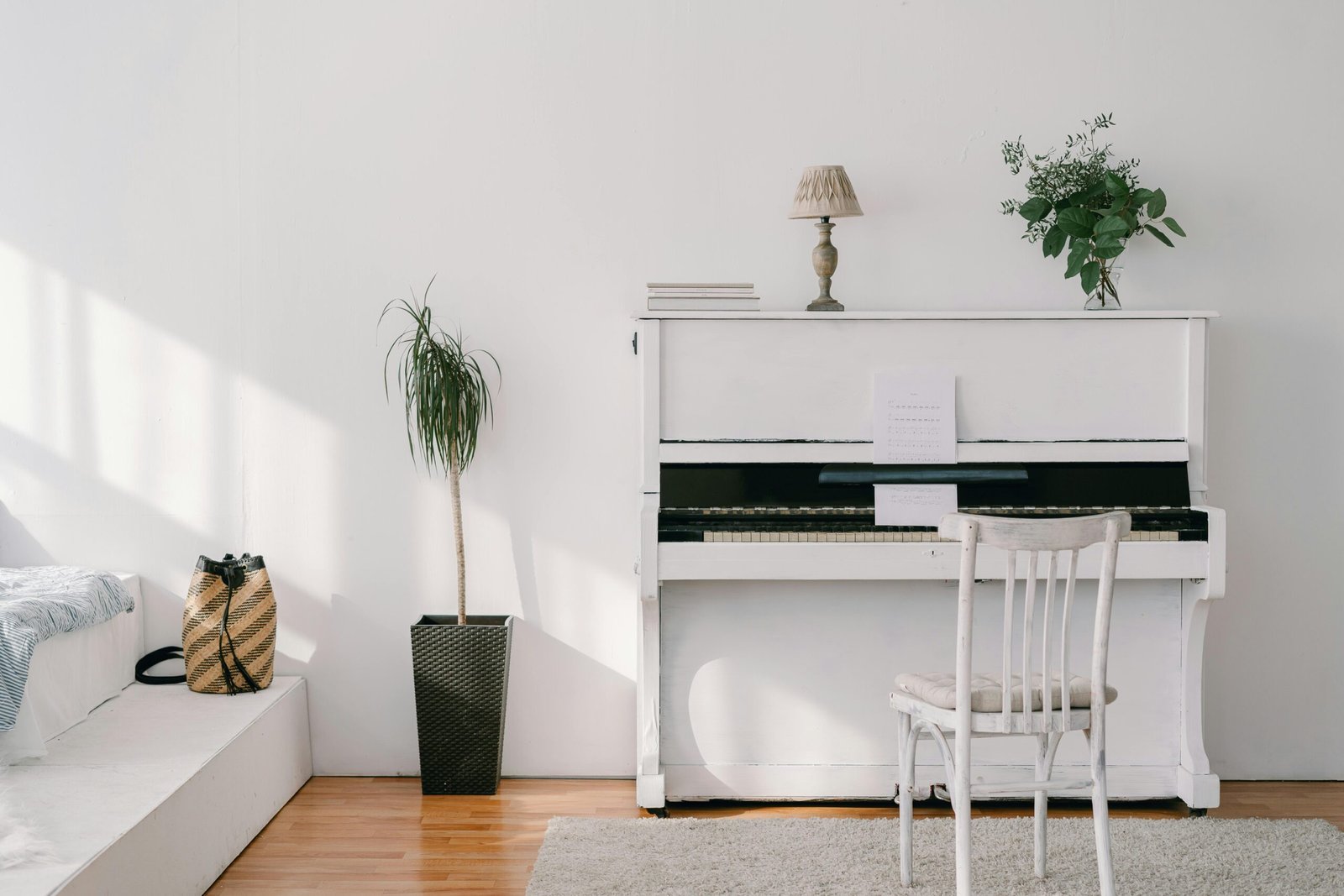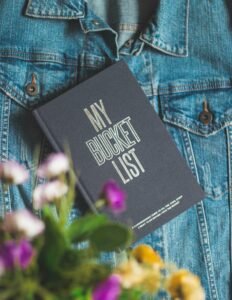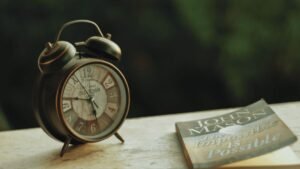Why try learning to play the piano later in life?
During COVID I turned 50 years old. It was a time of homeworking, no outings, restricted shopping and home schooling kids. It was a period of change in both mindset and outlook, a time when I thought about things I wanted to achieve. A bucket list, if you will. Many years ago (when I was18) I tried to learn the guitar but life took over and I gave up.
Now, as I was going over the hill, I wanted to do something for me, learn something special and leave a legacy of some kind. I decided , learning the piano later in life might not be so daunting after all. In this Post I talk about my first four years of this wonderful journey. Learning to play piano later in life.
An Impossible task.
I’m not talking about learning here, I’m talking about getting a Piano during COVID. My wonderful wife decided she would get me one for my birthday as she needed an idea and a surprise party was out of the question during that time. So she decided to go out and get me one. The problem was, I was one of many people who had decided to take up a new hobby and the following things became as rare as hens teeth:
-
- Bicycles
-
- Trampolines
-
- Flour
-
- Musical Instruments (especially Pianos)
And for some bizarre reason, Toilet paper.
Marta looked high and low for a Digital Piano for my birthday crossing the whole country. And she did it. She found a shop near the border with Germany who had a demonstration model they agreed to sell her. And so , for my 50th, I received my Pearl River PRK-80 and my journey of learning to play the piano later in life could begin.
Learning to play the piano later in life takes time
You know when you see something done well, it looks easy. Weather it be a skilled athlete, a great artist or a virtuoso musician. They seem to smoothly breeze through whatever they are doing and deliver excellence with ease. But we are seeing the final result, the culmination of years of practice, of frustration, of failure and of determination.
I thought to myself, how hard can it be? I have time, I love music and I am sure I will pick this up in no time. Oh how wrong I was. From those first days of playing – Happy birthday or – Ode to Joy to where I am now has been a long journey. Sometimes painful and frustrating, often times enjoyable, but always rewarding if you put the work in.
To put things in perspective , I would consider myself a very mediocre player. I am not the best pianist in the world by a long shot, but I am the best in my immediate family , and that’s a start. I found some information on the web that stated that – to reach professional level takes at least 10,000 hours of practice. Well that leaves me about another 9,600 hours to go. At this rate I will be good by the ripe old age of 150.
Finding a Good Learning Method
Like many beginners, I faced the daunting task of figuring out how to learn effectively. Should I take formal lessons, or try to teach myself? For cost effectiveness, best use of free time and the fact that we could not see anyone outside of our household during COVID, I decided to start with mobile apps.
There are a lot of apps out there. All of them claim to be the one to use so I would advise anyone thinking about that route to check them out, read the reviews, check to see if it would work for you.
And most importantly, check if it would work with your piano. I still use one app today, but I actually found that I made the most progress and learned more using books. They helped me to understand Music Theory better, to understand my limitations better and to recognise patterns.
I still never had a teacher which I am sure is the best method, but I found a combination which worked for me – for now. For the Apps, I have another post talking about the pro’s and cons I found for each one.
What the Hell Is This Language?
Music Theory – an esential part of learning any instrument is riddled with phrases and words such as:
-
- Adagio
-
- Allegro
-
- Andante
-
- Fortissimo
-
- Legato
-
- Piano
Sometimes it can seem like you are learning Italian , not music theory. But to be fair what you are learning IS a language, it is a way of communicating, it has a written form, it can be used to motivate, to relax, to convey feelings and to move peoples very soul. It is the most beautiful and probably the oldest language in the world. I mean music, not Italian by the way.
Youtube
There is a wealth of tutorials and instruction on Youtube and there are many people who use this as a method of learning. Personally I would not recommend it, although you might find some great instructors such as Jazer Lee or the team at Pianote.
But for me, I find actually going through these tutorials whilst playing to be a distraction and quite disturbing. I prefer to watch them when I am away from the paino so that I can focus on each task seperately.
However for inspiration I find youtube priceless. I have discovered such fantastic painists there and watched wonderful perfomances that inspire me to get back on the stool and take the next step in learning. Here is a list of some of my favourite pianists popular on youtube.
-
- Katherine Cordova is a self tought pianist who focuses on Movie and Series theme tunes with some fantastic renditions.
-
- Costantino Carrara’s videos show a love for playing and a joy that is infectious.
-
- When I first came across Jason Lyle Black I was amazed at his moody renditions of popular video games tunes.
-
- Yuki Piano is largely a street musician you can watch as she impresses crowds with her playing.
-
- Peter Buka is also a street pianist that has used his classical training to create some really interesting renditions.
Believe me, I have no illusions about getting to the level of these guys, but I love listening to them. Actually I even set up my own youtube channel to store my progress over the years. To be honest, It’s a lot of hassle to maintain. But if you want to check it out, you can find it here
Books and Sight Reading
As described above I concentrated on apps at the beginning and did not really start using books until I was well into my second year. I actually had mixed feelings about the books as I was not initially perceiving that I was making progress. Also I find the books hit and miss. For me, learning each song in the book was a painful process. Not because they were hard, but because I just did’nt have a feel for some songs. I am still searching for the ultimate book that can inspire me with every piece. But after checking all recommendations, I settled on Alfreds all in one book 1 and here is why.
-
- Progressive learning – from keyboard orientation to flowing pieces
-
- Step by Step approach – gradual learning and re-enforcement
-
- Theory Integration – music theory is woven into each section
-
- Finger numbering – crucial for flowing from one position to the next
-
- Sight reading exercises – re-enforcing the natural recognition of the staff
All in all I found this to be a great help, about as close as I could get to tuition without a tutor.
Conclusion
After 4 years of, (inconsistent) practice, I have made progress. Time by time I go back and have consistent streaks that give me great leaps in progress but I still need to find that commitment within myself to spend regular sessions with my piano and move forwards. After all, I should be great now right? It has been 4 years after all.
If you enjoyed reading this or any of it rings true to you, I would love to hear from you. I do intend to keep posts regular on this blog, not just about Piano but about life in general, of which my piano is a big part. That being said, I have inspired myself to go off now and put in a couple of hours of practice.





Thank you Jon. In my first year of learning and at a similar age as you this is really reassuring. Michelle
Hi Michelle, you are more than welcome. Indeed it can be daunting at first, but as long as we enjoy the process then all is well. Keep up the practice and let us know how you are getting on. Thanks for taking the time to read the blog.
Cheers, Jon